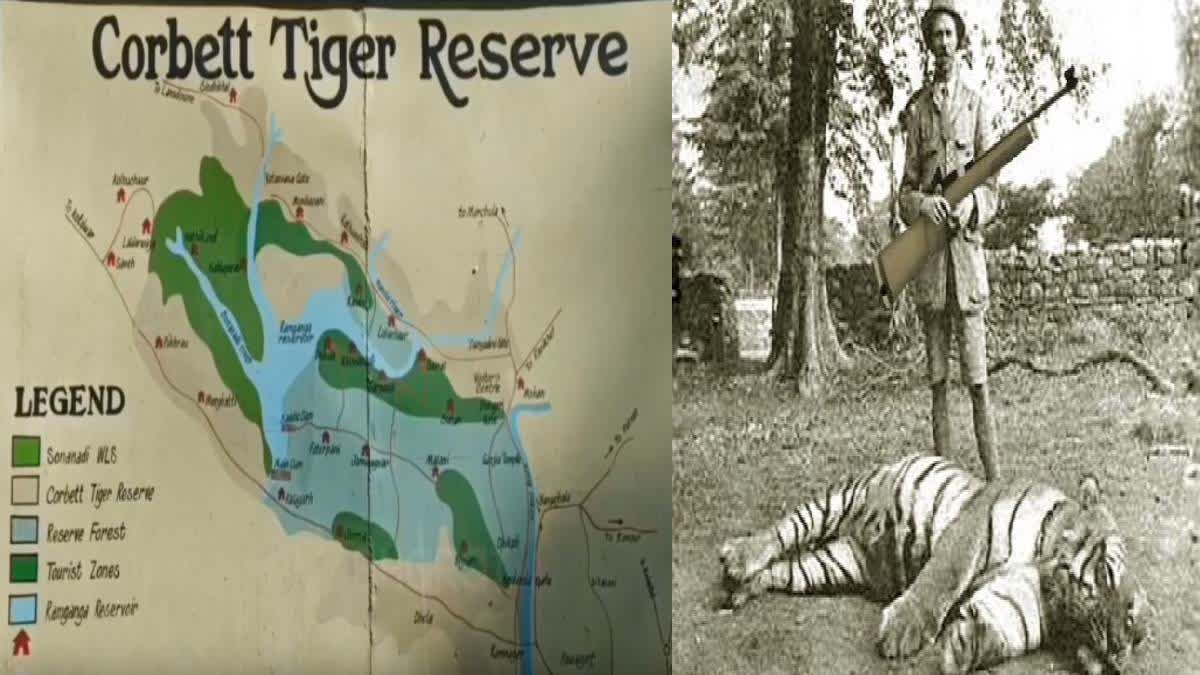Ramnagar (Uttarakhand): The 148th birth anniversary of the hunter-turned conservationist Jim Corbett was observed at the Jim Corbett National Park on Tuesday.
Park officials said the occasion was celebrated by cutting cake and garlanding Jim Corbett's statue at the Dhangarhi gate in the Dhikala zone of the park. Jim Corbett made a huge contribution in generating awareness on the importance of the fauna and biodiversity. He is known for saving people of Uttarakhand from man-eaters. He killed 33 man-eaters and later became one of the greatest wildlife conservators.
Amit Gwasakoti, Jim Corbett National Park warden said that a host of programmes have been planned throughout the day. There would also be a plantation drive to commemorate the occasion, he said. "The park was set up in 1936 and was originally named Hailey National Park (after the then Governor of United Provinces Sir Malcolm Hailey)," he said.
"Jim Corbett made a huge contribution to this park. Along with jobs for the locals, the park also serves to generate revenue in the tourism sector", said Inder Singh Bisht, an official of the Corbett village development society.
Jim Corbett killed 19 man-eating tigers and 14 man-eating leopards at the age of 31. He also wrote six books, which later became very popular, he said.
Born in Nainital on July 25, 1875, he was known as a famous hunter but later he became a conservationist and set up many national parks and sanctuaries in India.
Edward James 'Jim' Corbett was called by the then British government to kill the man-eating tigers. At that time man-eaters had created terror in Garhwal and Kumaon. In 1907, a man-eater had killed 436 people in Champawat. It was Jim Corbett who saved people from the threat of man-eaters.
Also Read: Six tigers to be shifted from Jim Corbett National Park to Rajaji
The first leopard that he killed in Mukteshwar in 1910 had killed 400 people and by the age of 31 he had killed 33 man-eating tigers and leopards.



